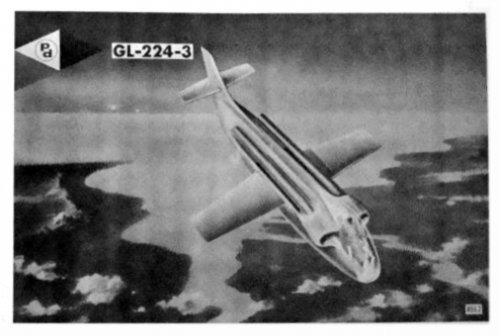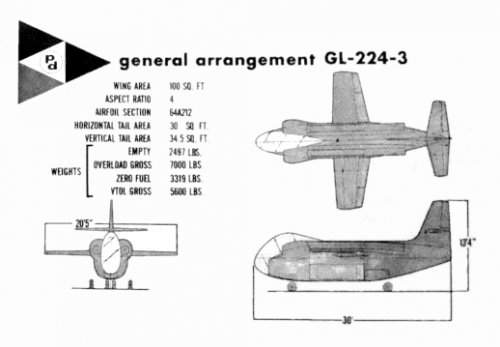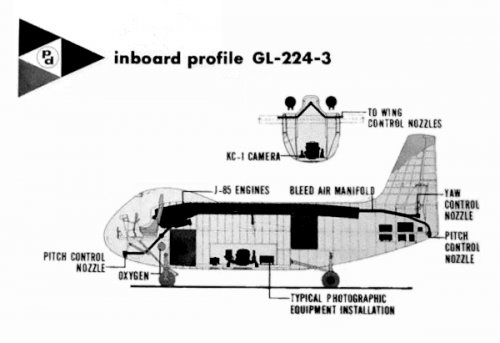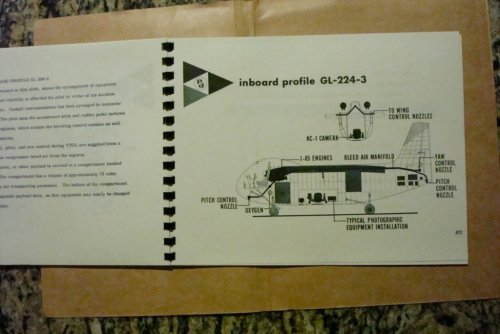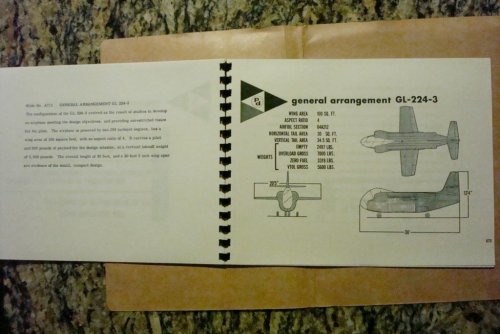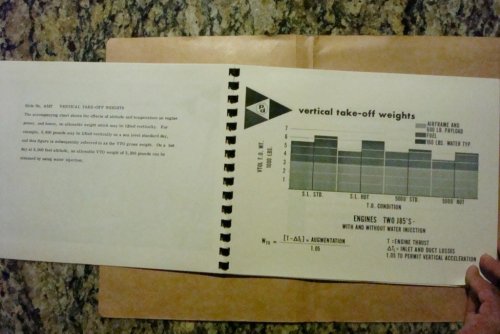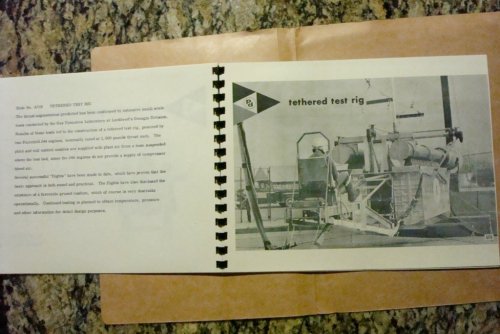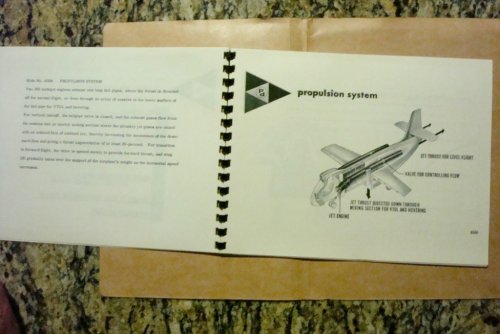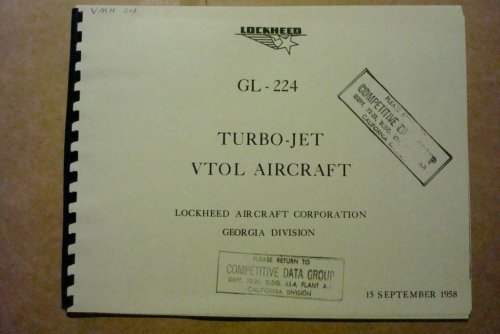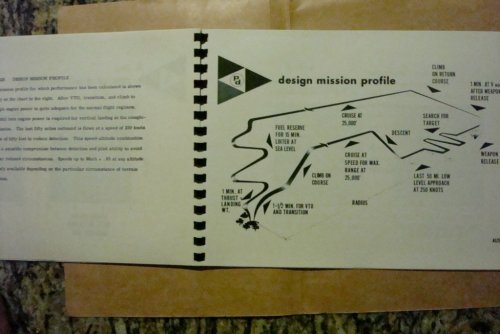- Joined
- 25 June 2009
- Messages
- 14,142
- Reaction score
- 4,334
GL-224-3 AIRPLANE
The GL-224-3 is designed to fill a need for a light weight VTOL airplane which can operate from small forward area bases for use on reconnaissance, close ground support, and a variety of other missions. The airplane is a small mid-wing monoplane, with the pilot located in a transparent canopy at the nose of the airplane for maximum visibility. Two turbojet engines are used for VTOL, and fuel economy is achieved by cruising on one engine during normal flight regimes.
PROPULSION SYSTEM
Two J85 turbojet engines exhaust into long tail pipes, where the thrust is directed aft for normal flight, or down through an array of nozzles in the lower surface of the tail pipe for VTOL and hovering.
For vertical takeoff, the tailpipe valve is closed, and the exhaust gases flow from the nozzles into an ejection mixing section where the primary jet gases are mixed with an induced flow of ambient air, thereby increasing the momentum of the downward flow and giving a thrust augmentation of at least 30-percent. For transition to forward flight, the valve is opened slowly to provide forward thrust, and wing lift gradually takes over the support of the airplane's weight as the horizontal speed increases.
GENERAL ARRANGEMENT GL-224-3
The configuration of the GL-224-3 evolved as a result of studies to develop an airplane meeting the design objectives, and providing unrestricted vision for the pilot. The airplane is powered by two J85 turbojet engines, has a wing area of 100 square feet, with an aspect ratio of 4. It carries a pilot and 600 pounds of payload for the design mission, at a vertical takeoff weight of 5,600 pounds. The overall length of 30 feet, and a 20 foot 5 inch wing span are evidence of the small, compact design.
VERSATILITY
[list type=decimal]
[*]Armed close support
[*]Reconnaissance missions
[*]Priority cargo
[*]Air evacuation
[*]Courier service
[/list]
(from the original company brochure dated 15 September 1958)
The GL-224-3 is designed to fill a need for a light weight VTOL airplane which can operate from small forward area bases for use on reconnaissance, close ground support, and a variety of other missions. The airplane is a small mid-wing monoplane, with the pilot located in a transparent canopy at the nose of the airplane for maximum visibility. Two turbojet engines are used for VTOL, and fuel economy is achieved by cruising on one engine during normal flight regimes.
PROPULSION SYSTEM
Two J85 turbojet engines exhaust into long tail pipes, where the thrust is directed aft for normal flight, or down through an array of nozzles in the lower surface of the tail pipe for VTOL and hovering.
For vertical takeoff, the tailpipe valve is closed, and the exhaust gases flow from the nozzles into an ejection mixing section where the primary jet gases are mixed with an induced flow of ambient air, thereby increasing the momentum of the downward flow and giving a thrust augmentation of at least 30-percent. For transition to forward flight, the valve is opened slowly to provide forward thrust, and wing lift gradually takes over the support of the airplane's weight as the horizontal speed increases.
GENERAL ARRANGEMENT GL-224-3
The configuration of the GL-224-3 evolved as a result of studies to develop an airplane meeting the design objectives, and providing unrestricted vision for the pilot. The airplane is powered by two J85 turbojet engines, has a wing area of 100 square feet, with an aspect ratio of 4. It carries a pilot and 600 pounds of payload for the design mission, at a vertical takeoff weight of 5,600 pounds. The overall length of 30 feet, and a 20 foot 5 inch wing span are evidence of the small, compact design.
VERSATILITY
[list type=decimal]
[*]Armed close support
[*]Reconnaissance missions
[*]Priority cargo
[*]Air evacuation
[*]Courier service
[/list]
(from the original company brochure dated 15 September 1958)

